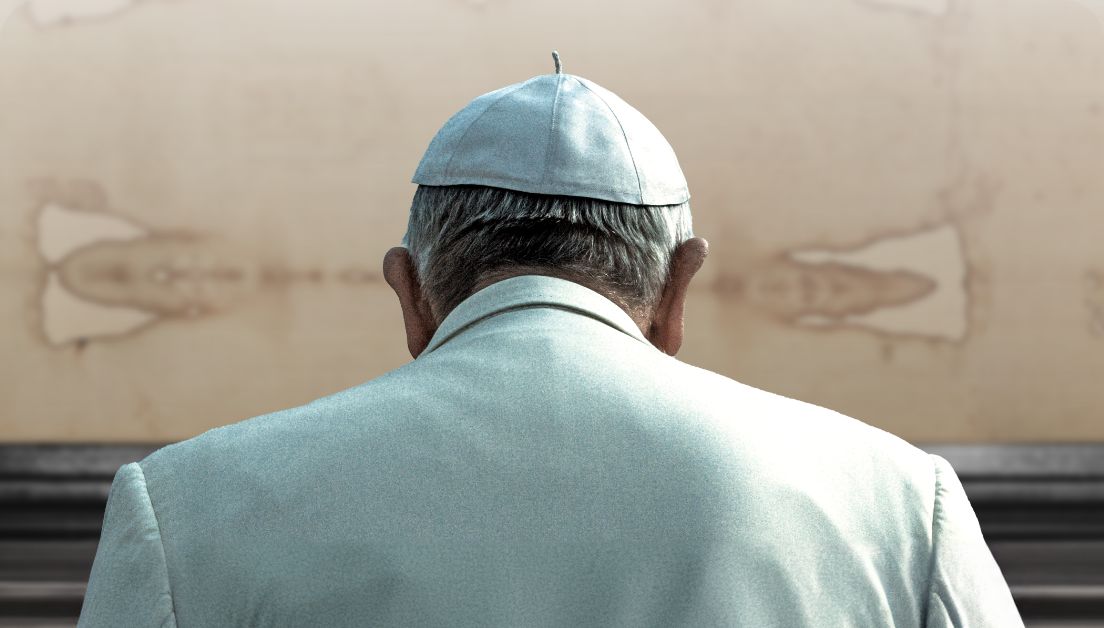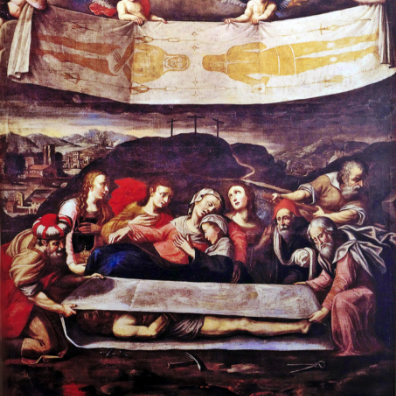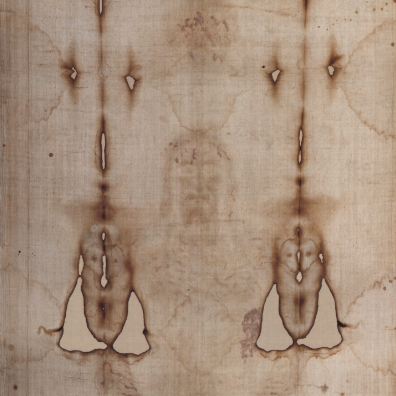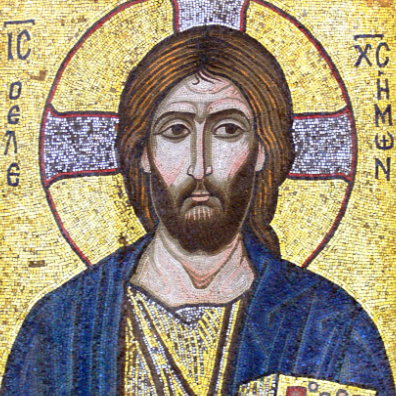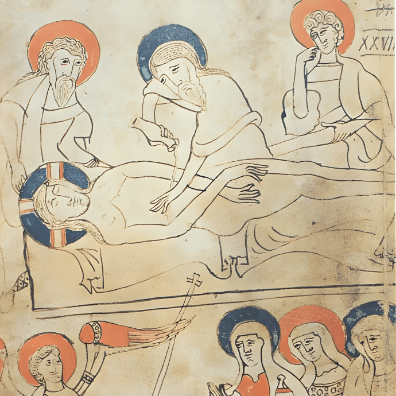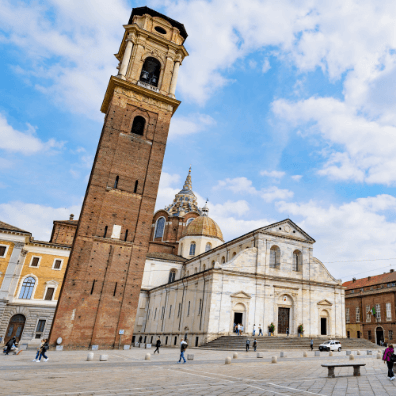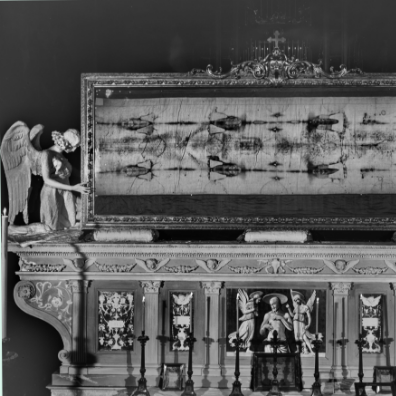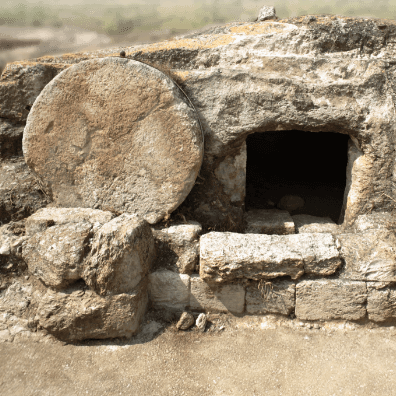Pope John Paul II took ownership of the Shroud from the House of Savoy after the death of former king Umberto II in 1983. Each of the recent popes have venerated the Shroud.
In 1998, Pope John Paul II said, “For the believer, what counts above all is that the Shroud is a mirror of the Gospel… We cannot escape the idea that the image it presents has such a profound relationship with what the Gospels tell of Jesus’ passion and death, that every sensitive person feels inwardly touched and moved at beholding it.”
In 2010, Pope Benedict XVI reflected, “This is the mystery of Holy Saturday! … [N]ot so much the defeat of life and of love, but rather victory, the victory of life over death, of love over hatred. [Those who venerate the Shroud] see the death of Jesus, but they also see his Resurrection; in the bosom of death, life is now vibrant, since love dwells within it. This is the power of the Shroud.”
In 2013, Pope Francis commented, “This face has closed eyes; it is the face of one who is deceased. Yet, mysteriously, he looks at us, and, in the silence, he speaks to us. How is it possible? Why do people of faith, like you, want to pause before this icon of a man scourged and crucified? Because the Man of the Shroud invites us to contemplate Jesus of Nazareth. This image impressed on the cloth speaks to our heart and urges us to climb the Mount of Calvary, to look at the Wood of the Cross, to immerse ourselves in the eloquent silence of love.”
Up until about 1900, the Shroud of Turin was primarily an object of religious devotion. Then something happened that caught the attention of scientists. In the next station, you’ll discover what that was.


